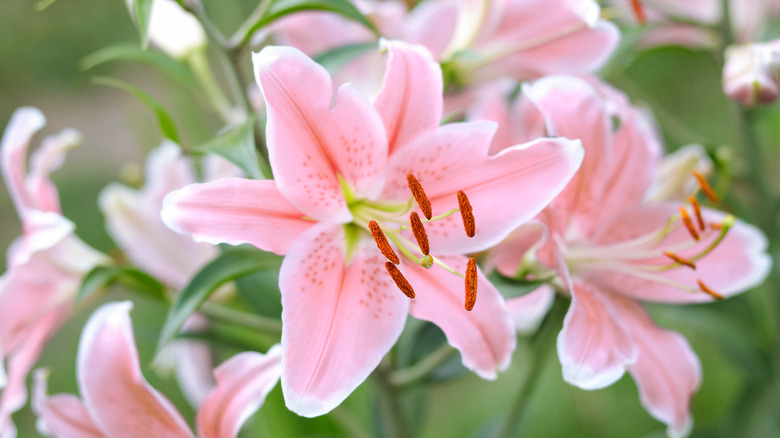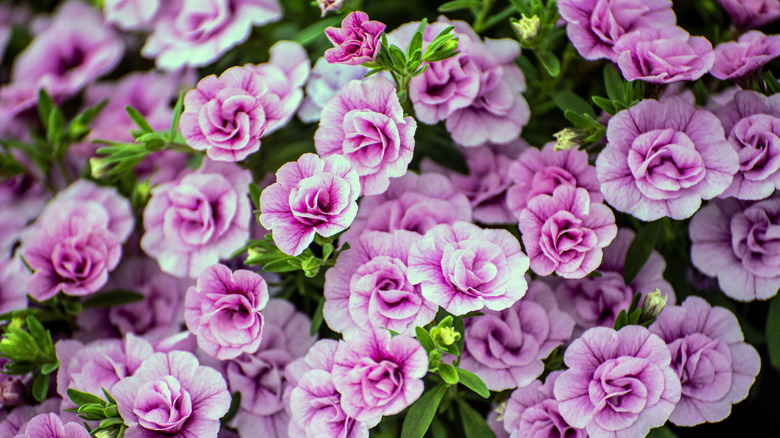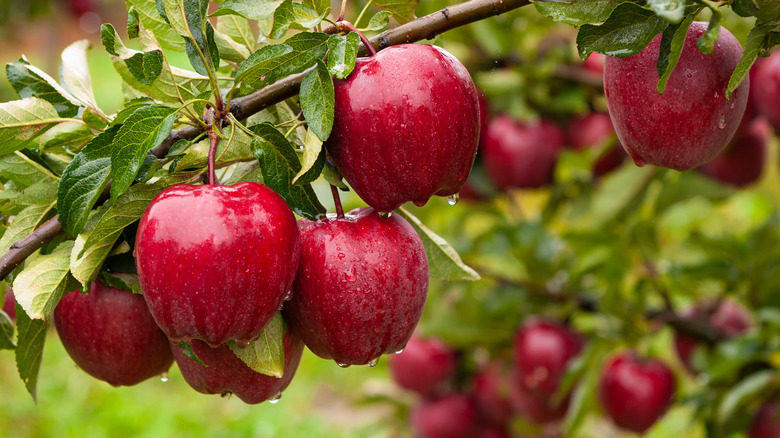What Is The Difference Between Monoecious And Dioecious Plants?
Aside from understanding proper watering and fertilization techniques, if we want our gardens to continue flourishing over time, it helps to gain a basic understanding of the biology of plants. The world of botany is varied and wide-ranging. Plants come in all sorts of shapes, sizes, and colors. They also come with differing biological structures that determine how their flowers reproduce and how they need to be pollinated in order to produce fruit. Monoecious and dioecious are botanical terms that tell you whether one plant can grow fruit on its own or if it needs to be paired with another.
Just like humans, flowers have an intricate set of organs that make up their reproductive systems. These organs go by names like pistil, stamen, stigma, sepal, anther, and filament. Unlike humans, however, not all flowers have the same parts. Some have all of them, while others have only a few. Knowing what you're dealing with in the garden allows you to determine what's needed to get a bountiful harvest, or really any harvest at all.
How to know what kind of plant you have
Look closely and start to notice that some flowers have parts that others lack. For example, on a stargazer lily (shown at the top), you see the obvious pistils and stamen poking out at the center of the bloom. You can even see the pollen-coated anthers. Then take the million bells calibrachoa flowers shown here, and it's not so clear. Looked at in this way, the flowers seem to be even more different from each other than they already did. This is where botany gets interesting.
Whether a plant is monoecious or dioecious depends on whether its flowers have already been botanically classified as perfect or imperfect. This is not a judgment of their beauty but rather a way for botanists to distinguish their reproductive capabilities. Perfect flowers have both male and female reproductive organs; therefore, all plants that have perfect flowers are monoecious — they can make fruit on their own. Imperfect flowers have either male or female parts, but that's not the only factor in determining if a plant is dioecious. The reason is that some species produce both imperfect male and imperfect female flowers on the same plant. Because the plant as a whole contains both types of reproductive organs, the plant as a whole remains monoecious. It's not until you have male flowers on one plant and female flowers on an entirely different plant (of the same species) that you enter the realm of dioecious plants.
How to get fruit from a dioecious plant
Most plants produce perfect flowers, which basically means they are hermaphrodites, and the male and female reproductive organs work together to produce fruit. Dioecious plants that cannot do this require cross-pollination, meaning the pollen from one plant must be transported to another plant. Holly, asparagus, persimmons, and juniper are commonly known dioecious plants. Apple trees are among them as well. This is why you can have a lone healthy apple tree in your yard for years that never grows any fruit.
The most important step to ensuring dioecious plants can be pollinated is to make sure that you're growing both female and male plants in close proximity to each other. Bees, butterflies, birds, and the wind will take it from there. On the other hand, if you prefer to have something like a large tree for shade and gorgeous springtime blossoms but don't want the hassle and mess of unwanted fruit, you'll do the opposite and stick to a solo tree or multiple trees of the same sex.


